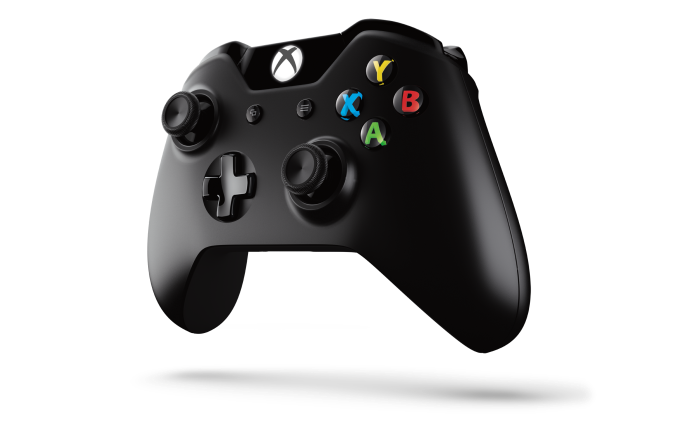The Xbox One: Hardware Analysis & Comparison to PlayStation 4
by Anand Lal Shimpi on May 22, 2013 8:00 AM ESTPower & Thermals
Microsoft made a point to focus on the Xbox One’s new power states during its introduction. Remember that when the Xbox 360 was introduced, power gating wasn’t present in any shipping CPU or GPU architectures. The Xbox One (and likely the PlayStation 4) can power gate unused CPU cores. AMD’s GCN architecture supports power gating, so I’d assume that parts of the GPU can be power gated as well. Dynamic frequency/voltage scaling is also supported. The result is that we should see a good dynamic range of power consumption on the Xbox One, compared to the Xbox 360’s more on/off nature.
AMD’s Jaguar is quite power efficient, capable of low single digit idle power so I would expect far lower idle power consumption than even the current slim Xbox 360 (50W would be easy, 20W should be doable for truly idle). Under heavy gaming load I’d expect to see higher power consumption than the current Xbox 360, but still less than the original 2005 Xbox 360.
Compared to the PlayStation 4, Microsoft should have the cooler running console under load. Fewer GPU ALUs and lower power memory don’t help with performance but do at least offer one side benefit.
OS
The Xbox One is powered by two independent OSes running on a custom version of Microsoft’s Hyper-V hypervisor. Microsoft made the hypervisor very lightweight, and created hard partitions of system resources for the two OSes that run on top of it: the Xbox OS and the Windows kernel.
The Xbox OS is used to play games, while the Windows kernel effectively handles all apps (as well as things like some of the processing for Kinect inputs). Since both OSes are just VMs on the same hypervisor, they are both running simultaneously all of the time, enabling seamless switching between the two. With much faster hardware and more cores (8 vs 3 in the Xbox 360), Microsoft can likely dedicate Xbox 360-like CPU performance to the Windows kernel while running games without any negative performance impact. Transitioning in/out of a game should be very quick thanks to this architecture. It makes a ton of sense.
Similarly, you can now multitask with apps. Microsoft enabled Windows 8-like multitasking where you can snap an app to one side of the screen while watching a video or playing a game on the other.
The hard partitioning of resources would be nice to know more about. The easiest thing would be to dedicate a Jaguar compute module to each OS, but that might end up being overkill for the Windows kernel and insufficient for some gaming workloads. I suspect ~1GB of system memory ends up being carved off for Windows.
Kinect & New Controller
All Xbox One consoles will ship with a bundled Kinect sensor. Game console accessories generally don’t do all that well if they’re optional. Kinect seemed to be the exception to the rule, but Microsoft is very focused on Kinect being a part of the Xbox going forward so integration here makes sense.
The One’s introduction was done entirely via Kinect enabled voice and gesture controls. You can even wake the Xbox One from a sleep state using voice (say “Xbox on”), leveraging Kinect and good power gating at the silicon level. You can use large two-hand pinch and stretch gestures to quickly move in and out of the One’s home screen.
The Kinect sensor itself is one of 5 semi-custom silicon elements in the Xbox One - the other four are: SoC, PCH, Kinect IO chip and Blu-ray DSP (read: the end of optical drive based exploits). In the One’s Kinect implementation Microsoft goes from a 640 x 480 sensor to 1920 x 1080 (I’m assuming 1080p for the depth stream as well). The camera’s field of view was increased by 60%, allowing support for up to 6 recognized skeletons (compared to 2 in the original Kinect). Taller users can now get closer to the camera thanks to the larger FOV, similarly the sensor can be used in smaller rooms.
The Xbox One will also ship with a new redesigned wireless controller with vibrating triggers:
Thanks to Kinect's higher resolution and more sensitive camera, the console should be able to identify who is gaming and automatically pair the user to the controller.
TV
The Xbox One features a HDMI input for cable TV passthrough (from a cable box or some other tuner with HDMI out). Content passed through can be viewed with overlays from the Xbox or just as you would if the Xbox wasn’t present. Microsoft built its own electronic program guide that allows you to tune channels by name, not just channel number (e.g. say “Watch HBO”). The implementation looks pretty slick, and should hopefully keep you from having to switch inputs on your TV - the Xbox One should drive everything. Microsoft appears to be doing its best to merge legacy TV with the new world of buying/renting content via Xbox Live. It’s a smart move.
One area where Microsoft is being a bit more aggressive is in its work with the NFL. Microsoft demonstrated fantasy football integration while watching NFL passed through to the Xbox One.














245 Comments
View All Comments
bji - Wednesday, May 22, 2013 - link
I like the 8 year or longer console cycle. It means that I can focus on enjoying games more than upgrading every couple of years to the latest and greatest that isn't really any more fun to play, just has more eye candy.Hrel - Wednesday, May 22, 2013 - link
"We already have the Windows kernel running on phones, tablets, PCs and the Xbox, now we just need the Xbox OS across all platforms as well." That, 100 infinity BAGILLION times that!I'd actually like to see Nintendo release a console in time for X-mas 2014 with comparable hardware performance. Just because otherwise I don't see how that company will survive and I really don't want Nintendo to go away. I don't know if that's within their realm of possibility but they need to do something because the wiiU is pretty terrible.
tipoo - Wednesday, May 22, 2013 - link
But they won't, as laughable as Wii U sales are that would still anger however many bought that, likely their core base. They'll survive anyways, see their cash reserves, plus any platform Mario and Zelda et al come to will be fine. Nintendo survives on first party, always has.tipoo - Wednesday, May 22, 2013 - link
That said, yes I would have preffered if they just kept motionplus controls and the cost of the tablet controller instead went to an APU.skatendo - Friday, May 24, 2013 - link
Seriously? Have you even tried the GamePad for an extended period of time? The thing is incredible and very useful. Also, the Wii U CPU/GPU is very customized and tailored for gaming. It's smart Nintendo didn't release tech specs because most everybody wouldn't understand how it would perform in real time. Custom silicon is a magnificent thing. Heck look at the 4-core CPU and 12-core GPU for the Tegra 3 and pit that against a paltry looking dual core CPU/GPU Apple A5 and you wouldn't have any competition right? (on paper at least) And who would have thought that the A5 with A FOURTH THE CORES and much slower clockspeed outperformed about twice the game performance the "superior" Tegra 3.marc1000 - Wednesday, May 22, 2013 - link
a great thing MS could do is find a way to put Windows Phone 8 inside of Nvidia Shield - and then have the option to stream your game from the Xbox One to to Shield.That would be awesome, family could be watching TV on the living room and you could have high-quality gaming anywhere - event if it would not be possible to play on the console AND shield at the same time, of course.
Streaming games from X1 to Shield (full control scheme) or any WP8 phone/tablet (simpler games) would be that killer-app that MS needs so badly to boost it's phone business.
nforce4max - Wednesday, May 22, 2013 - link
Interesting read and excited that GCN is being used but the cpu side of things I have to wonder how it will actually perform. Bobcat was fairly weak (think of a Pentium 4) and was terrible starved of memory bandwidth but the worst was that the L2 cache only worked at half the core clock. If the Jaguar cores still have the same sluggish L2 cache then even 8 of them is going to be painful but I suppose devs are going to offload what they can onto the gpu (openCL).As for the 32mb on die memory as stated in the article it all comes down to how it is used. If used for the frame buffer it will limit resolution but make for a huge fps boost as the rop and tmu are bandwidth hogs gpu wise but leave the rest for the cpu and shader. The cpu being weak as it is won't need much provided the gpu doesn't hog to much of the bandwidth. If used as a cache it will make up for the weak L2 cache and provide a unified pool for all 8 cores, if software only then we might have to wait to find out what for.
Overall this is good news for the PC, no more games like GTA4 :D
Arsynic - Wednesday, May 22, 2013 - link
Listening to Sony PR and Sony fanboys you'd think PS4 had every advantage under the sun and will retail for $400.MooseMuffin - Wednesday, May 22, 2013 - link
Nice article Anand. Rare to get level-headed analysis at the start of a console cycle.highend - Wednesday, May 22, 2013 - link
Amiga CDTV in 1990 looked better than XBOX One, see yourself: www.amigahistory.co.uk/cdtv.jpg Also M$ copied from Commodore looks & design